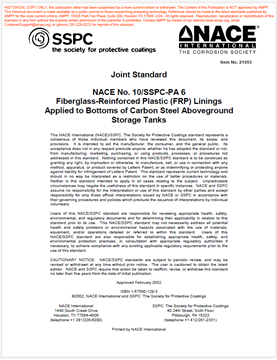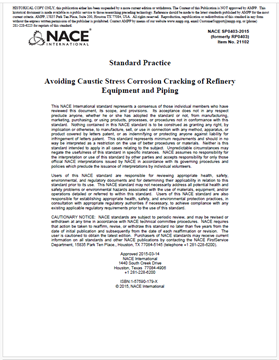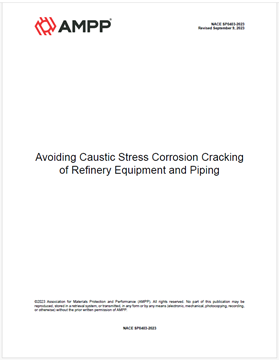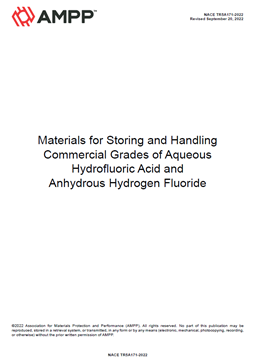Search
Products tagged with 'carbon steel'
View as
Sort by
Display
per page
Modified magnetite surface layers on carbon steel in aqueous CO2 environments
Product Number:
51323-19127-SG
Publication Date:
2023
$20.00
NACE Emergency Guideline 2-HD1997 Protective Coatings for Carbon Steel and Austenitic Stainless Steel Surfaces Under Thermal Insulation and Cementitious Fireproofing
Product Number:
21079-HD1997
ISBN:
1-57590-037-8
Publication Date:
1997
$179.00
NACE No. 10/SSPC-PA 6, Fiberglass-Reinforced Plastic (FRP) Linings Applied to Bottoms of Carbon Steel Aboveground Storage Tanks
Product Number:
21093-SG
Publication Date:
2002
$179.00
NACE No. 10/SSPC-PA 6-2002-SG (Chinese), Fiberglass-Reinforced Plastic (FRP) Linings Applied to Bottoms of Carbon Steel Aboveground Storage Tanks
Product Number:
21144-SG
ISBN:
1-57590-235-4
Publication Date:
2002
$179.00
NACE Publication 5A192-2004 Integrity of Equipment in Anhydrous Ammonia Storage and Handling
Product Number:
24061-SG
Publication Date:
2004
$179.00
NACE SP0205-2015 (formerly RP0205) Design, Fabrication, and Inspection of Tanks for the Storage of Petroleum Refining Alkylation Unit Spent Sulfuric Acid at Ambient Temperatures
Product Number:
21313-SG
ISBN:
1-57590-203-6
Publication Date:
2015
$179.00
NACE SP0403-2015, Avoiding Caustic Stress Corrosion Cracking of Refinery Equipment and Piping
Product Number:
21102-SG
Publication Date:
2015
$179.00
NACE SP0403-2023, Avoiding Caustic Stress Corrosion Cracking of Refinery Equipment and Piping
Product Number:
NACE SP0403-2023
Publication Date:
2023
$109.00
NACE TR5A171-2022, Materials for Storing and Handling Commercial Grades of Aqueous Hydrofluoric Acid and Anhydrous Hydrogen Fluoride
Product Number:
NACE TR5A171-2022
Publication Date:
2022
$109.00
Performance of API 5L X65 in 138 MPa Supercritical CO2
Product Number:
51323-18863-SG
Publication Date:
2023
$20.00
Performance of Thermally Sprayed Aluminium in 10MPa Supercritical CO2
Product Number:
51324-21069-SG
Publication Date:
2024
$40.00
Performing Corrosion Risks Assessments of Nuclear Waste Process Tanks Containing Variable Waste Chemistries
Product Number:
51323-18878-SG
Publication Date:
2023
$20.00












